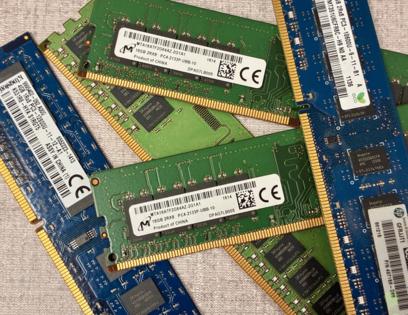Jim Rossman: RAM and storage – how much do you need and what does it do?
Published in Science & Technology News
I got a phone call from a neighbor yesterday. His eight-year-old Microsoft Surface tablet has started acting up.
He likes the tablet form factor and uses the on screen keyboard for his text input. After an incident where he dropped an item on the back of the case, a portion of the screen no longer responds reliably when touched. So when he tries to type the letter A, he may have to touch the spot repeatedly to get it to type an A.
So, instead of having the touch screen replaced on an old Surface, he’s going to take this opportunity to get a new(er) tablet.
I started out asking what his needs were. He isn’t doing anything outrageous – just web surfing, email, some light computing and online research.
He’s comfortable with the Windows operating system, so he’s going to go with another (current generation) Surface.
He wants to buy locally from Micro Center, and he’s looked at their open-box offerings. Where he has questions concerns the options, which include RAM and storage space.
Most people understand storage, which is the space you have available to store your operating system, apps and documents, including photos and videos. The thing with tablets and even many laptops these days is you’re stuck with your original choice.
Tablets don’t have upgradable internal storage, so buy as much as you think you’ll need. You can certainly use external hard drives and memory cards to store files, but the operating system and apps need to live on the internal storage. For Windows OS machines, you’ll want at least 128 gigabytes of storage. More is always better, so get as much as you can afford. A better option is 256GB or even 512GB or more.
The need for RAM is not as easy to explain. RAM is temporary storage that your operating system and apps use when they are actively running. As you launch apps, they are loaded into RAM so they can run really fast, but when you shut down the computer, RAM gets flushed.
Also, unless you are running a separate video card with its own RAM, your system RAM is being used to run the video outputs as well.
More RAM means you can run more apps simultaneously. These days, eight gigabytes of RAM is the absolute minimum. I’d be more comfortable recommending 16 GB as the new minimum and 32 GB as a luxury.
Depending on what you are buying, you may have a choice of processors. Your budget will likely determine (and limit) what processors are available in your price range.
But getting back to my neighbor, his preference for saving money by shopping open box options means his options were limited to the available stock at the store. At least now he knows what the RAM and storage options mean and can make the best choice for his needs and budget.
©2025 Tribune Content Agency, LLC.







Comments